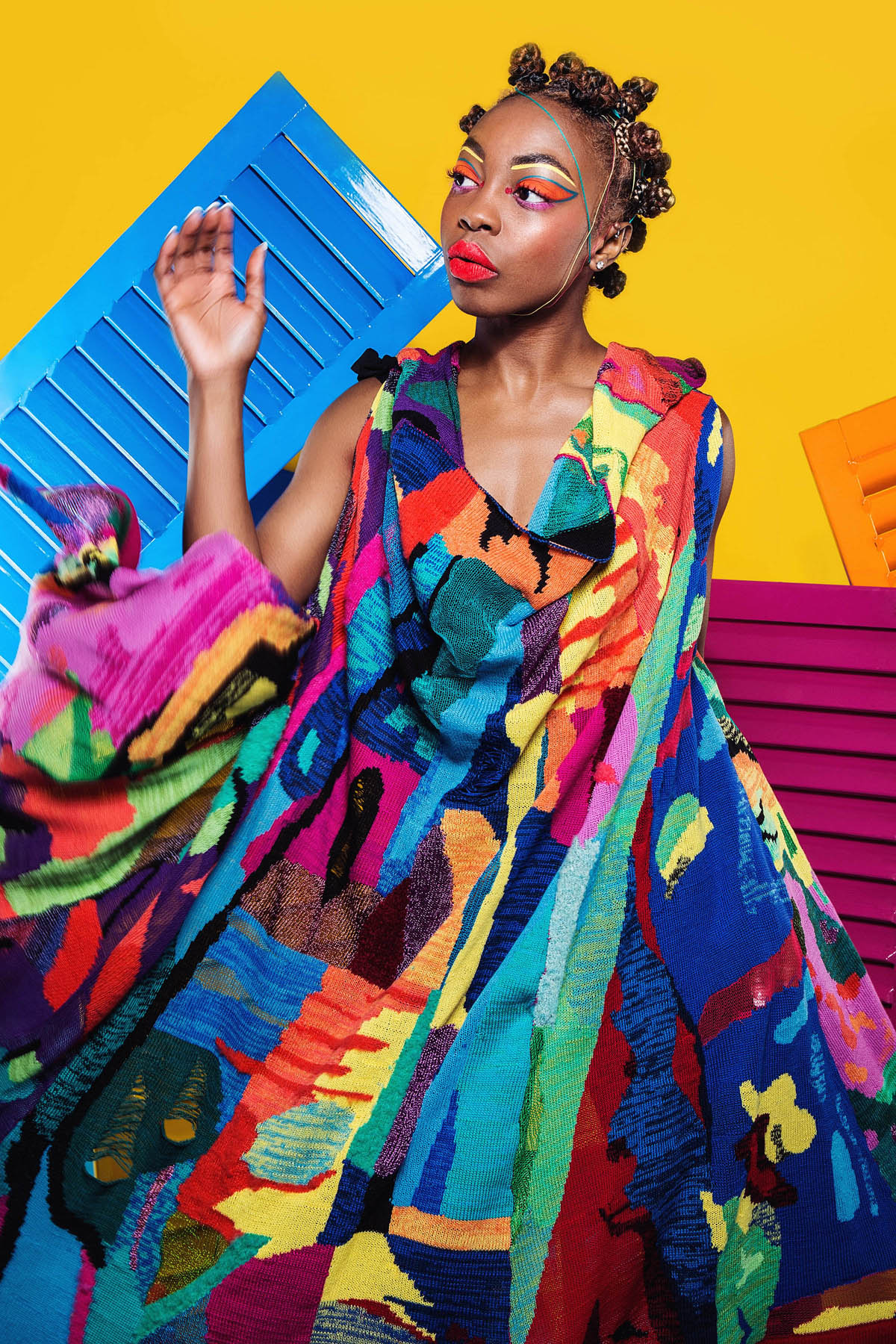Hailing from Middlesbrough Kathryn Lund graduated from the University of Huddersfield with a first class degree in Textiles with Surface Design. Her striking and eye-catching designs take knitting to a whole new level. She tells us more about her Colour Regeneration piece and how her hometown has influenced her work…
How did you first get into textiles?
Huddersfield is where I first started to knit and discovered my passion for knitted textiles. From there on I have been fascinated by what can be considered ‘wearable’, pushing the conventions of knitting in terms of materials and aesthetic. I have been heavily influenced by my passions for travel and a sense of place, whether that is aesthetic or more towards emotions and connections, things I have seen leave me with rich inspiration.
What was the starting inspiration for your Colour Regeneration piece?
Colour Regeneration explores the abandoned surfaces within urban areas focusing on the rejuvenating power of colour. The influence of colour is pivotal to the reincarnation of the lost and forgotten textures; which have a strong translation through to the knitted pieces which utilise both conventional and less traditional yarn.
I have always loved working with colour and the textures, and surfaces within Middlesbrough’s town centre are rich with inspiration. Many people perceive Middlesbrough in a negative image, due to the economic and social issues it faces, however, as my hometown I can see past the grey façade and I wanted to explore how colour can change people’s perceptions of things, to regenerate and breathe life back into an area.
Can you describe how you draw inspiration for your pieces?
The physical practice of drawing is a huge part of my inspiration, I always work from primary photographs. My inspiration is often something I have seen in person; as this leads me to produce much stronger concepts and work. I manipulate my photography in Photoshop to draw out textures and colours; from this, I begin to develop large-scale expressive drawing.
I rarely draw smaller than A3, allowing me to create bold drawings, applying a lot of mixed media and textural materials such as plaster and pastels. Leading from drawing into the sampling process, the drawing media I have used influences my yarn choices for example; a bold painted section may translate into chunky brushed wool, whereas a lighter smudged chalk would be translated as a finer synthetic yarn. Working with intarsia as my main technique allows me to keep a strong connection between knitting and drawing; I feel much of my practice explores the relationship between the two.
What is important to you in terms of the textile industry?
Keeping the knowledge and skill of the craft of knit relevant is so important to me. I have conducted research on the impacts of advancing technology within Knitted textiles and while it is incredible and advancing technology is producing amazing things; I believe people still need a knowledge of the craft from a domestic level to truly innovate and push the technology of the future to its true potential.
Your work is quite experimental in style – where do you think it fits – is it art or fashion?
The outcome is intended for fashion however, it is for a woman who wants to be seen and express her confidence and style in the clothes she wears, turning my pieces into more of an art form due to their bespoke nature and the way they reflect the wearer’s character. I feel my pieces fit with the notions of the high-end fashion market, where fashion becomes more about expression and making a statement.
What are you working on now?
Over the next year, Colour Regeneration will evolve into a collection including a variety of garments. I will continue with my experimental approach to yarns and colour; pushing the aesthetic I have forged. Looking further afield for inspiration to urban areas across Europe, such as Barcelona and Berlin for a fresh spin on the initial developments I have created is the next major step.
What would be a dream commission for you?
My dream would be to be asked to create a piece for Dover Street Market or Comme des Garcons, creating knitted garments but also the visual styling creating something almost like an installation. I love the way they bridge between art and fashion within their stores. Working with the Fashion and Textiles Museum would also be truly incredible; the Museum is a place so full of inspiration and incredible exhibitions.








